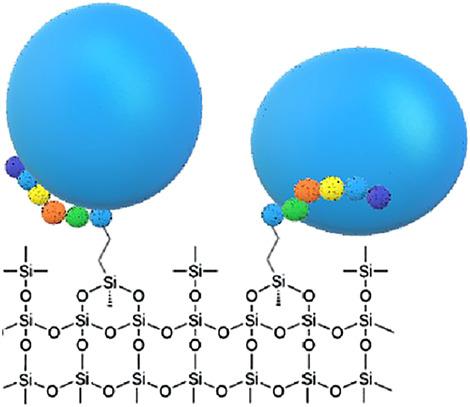当前位置:
X-MOL 学术
›
J. Mol. Recognit.
›
论文详情
Our official English website, www.x-mol.net, welcomes your
feedback! (Note: you will need to create a separate account there.)
Combinatorial screening of polymer nanoparticles for their ability to recognize epitopes of AAV-neutralizing antibodies.
Journal of Molecular Recognition ( IF 2.3 ) Pub Date : 2019-11-19 , DOI: 10.1002/jmr.2824 Elena V Piletska 1 , Eugeny Mirkes 2 , Stanislav S Piletsky 3 , Hasan Abosoglu 1 , Alfeshani Cassim 1 , Edmund Chu 1 , Simon Doughty 1 , Shaun-Jones Eganda 1 , Hikari Fuchigami 1 , Aleah Hussein 1 , Meedhu Olickal 1 , Neelay Parmar 1 , Akhil Sebastian 1 , Sergey A Piletsky 1
Journal of Molecular Recognition ( IF 2.3 ) Pub Date : 2019-11-19 , DOI: 10.1002/jmr.2824 Elena V Piletska 1 , Eugeny Mirkes 2 , Stanislav S Piletsky 3 , Hasan Abosoglu 1 , Alfeshani Cassim 1 , Edmund Chu 1 , Simon Doughty 1 , Shaun-Jones Eganda 1 , Hikari Fuchigami 1 , Aleah Hussein 1 , Meedhu Olickal 1 , Neelay Parmar 1 , Akhil Sebastian 1 , Sergey A Piletsky 1
Affiliation

|
A library of 17 nanoparticles made of acrylate and methacrylate copolymers is prepared, characterized, and screened against six epitopes of adeno-associated viruses (AAV)-neutralizing antibodies to assess their affinity and specificity. Peptide epitopes are immobilized onto the surface of glass beads, packed in filtration microplates, and incubated with fluorescein-labelled nanoparticles. Following intense washing, the affinity of nanoparticles to immobilized epitopes is assessed by measuring the fluorescence of captured nanoparticles. The results show that polar monomers, acrylic acid in particular, have a positive impact on polymer affinity towards all peptides used in this study. The presence of hydrophobic monomers, on other hand, has a negative impact on polymer binding. The composition of peptides used in this study has no noticeable impact on the affinity of synthesized nanoparticles. The affinity of nanoparticles with the highest affinity to peptide targets does not exceed millimolar level. Overall, it is found that the synthesized library showed modest affinity but lacked specificity, which should be further "tuned," for example, by using molecular imprinting to achieve an acceptable level of affinity and specificity for practical application.
中文翻译:

聚合物纳米粒子的组合筛选,以确定它们识别 AAV 中和抗体表位的能力。
制备、表征和筛选了 17 个由丙烯酸酯和甲基丙烯酸酯共聚物制成的纳米粒子库,并针对腺相关病毒 (AAV) 中和抗体的六个表位进行了筛选,以评估它们的亲和力和特异性。肽表位固定在玻璃珠表面,装入过滤微孔板,并与荧光素标记的纳米颗粒一起孵育。强烈洗涤后,通过测量捕获的纳米粒子的荧光来评估纳米粒子对固定表位的亲和力。结果表明,极性单体,尤其是丙烯酸,对聚合物对本研究中使用的所有肽的亲和力都有积极影响。另一方面,疏水单体的存在对聚合物结合有负面影响。本研究中使用的肽的组成对合成纳米颗粒的亲和力没有明显影响。对肽靶标亲和力最高的纳米颗粒的亲和力不超过毫摩尔水平。总的来说,发现合成的文库显示出适度的亲和力但缺乏特异性,这应该进一步“调整”,例如,通过使用分子印迹来达到实际应用可接受的亲和力和特异性水平。
更新日期:2020-03-03
中文翻译:

聚合物纳米粒子的组合筛选,以确定它们识别 AAV 中和抗体表位的能力。
制备、表征和筛选了 17 个由丙烯酸酯和甲基丙烯酸酯共聚物制成的纳米粒子库,并针对腺相关病毒 (AAV) 中和抗体的六个表位进行了筛选,以评估它们的亲和力和特异性。肽表位固定在玻璃珠表面,装入过滤微孔板,并与荧光素标记的纳米颗粒一起孵育。强烈洗涤后,通过测量捕获的纳米粒子的荧光来评估纳米粒子对固定表位的亲和力。结果表明,极性单体,尤其是丙烯酸,对聚合物对本研究中使用的所有肽的亲和力都有积极影响。另一方面,疏水单体的存在对聚合物结合有负面影响。本研究中使用的肽的组成对合成纳米颗粒的亲和力没有明显影响。对肽靶标亲和力最高的纳米颗粒的亲和力不超过毫摩尔水平。总的来说,发现合成的文库显示出适度的亲和力但缺乏特异性,这应该进一步“调整”,例如,通过使用分子印迹来达到实际应用可接受的亲和力和特异性水平。











































 京公网安备 11010802027423号
京公网安备 11010802027423号